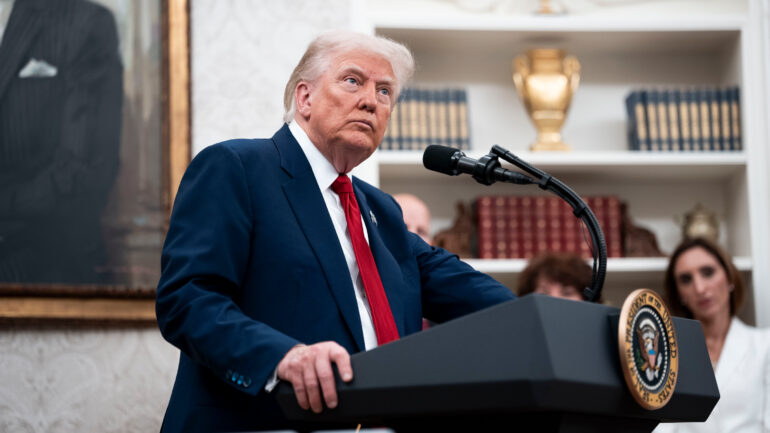In a dramatic showdown, President Donald Trump’s administration is racing to salvage his sweeping tariff plan after a U.S. trade court dealt a major blow, ruling the tariffs illegal. The decision, handed down on Wednesday, May 28, 2025, by the U.S. Court of International Trade, declared that Trump overstepped his authority by using the International Emergency Economic Powers Act (IEEPA) to impose widespread tariffs. Now, the administration is poised to escalate the fight to the U.S. Supreme Court as early as Friday, May 30, 2025, seeking “emergency relief” to pause the ruling and protect national security and economic interests.
A Judicial Roadblock
The trade court’s three judges—Jane Restani, Timothy Reif, and Gary Katzmann—struck down dozens of country-specific tariffs Trump introduced in April 2025 as part of his “Liberation Day” trade agenda. The judges argued that the IEEPA, meant for “unusual and extraordinary” national emergencies, doesn’t grant the president “unbounded authority” to slap tariffs on imports. The ruling permanently blocks these retaliatory duties and bars future tweaks, giving the administration just 10 days to comply. A separate federal judge in Washington, D.C., echoed this on Thursday, calling the tariffs “unlawful” in a case brought by Illinois toy importers.
The decision threatens Trump’s vision of using tariffs to reshape global trade, boost U.S. manufacturing, and shrink the $1.2 trillion U.S. goods trade deficit—a key campaign promise. Lawsuits from small businesses, like wine importer VOS Selections, and a dozen states, led by Oregon, argued the tariffs were crippling and illegal. “This ruling reaffirms that our laws matter, and that trade decisions can’t be made on the president’s whim,” said Oregon Attorney General Dan Rayfield.
The Administration Fights Back
Trump’s team fired back with fury. White House Press Secretary Karoline Leavitt blasted the judges, claiming they “brazenly abused their judicial power” to undermine Trump’s mandate from the American people. Deputy Chief of Staff Stephen Miller called it a “judicial coup,” while trade advisor Peter Navarro labeled the court “globalist” and “pro-importer” on Bloomberg TV. In a 500-word social media post, Trump questioned the judges’ motives, asking if “pure hatred” of him drove the decision, ignoring that he appointed one of them in 2018.
The administration filed for emergency relief in the U.S. Court of Appeals for the Federal Circuit on Thursday, May 29, 2025, warning of “irreparable national-security and economic harms.” They’ve asked the trade court to pause enforcement during the appeal, citing risks to a recent trade deal with China and future negotiations. A temporary pause was granted by the appeals court, but if it’s not extended, the Supreme Court may be Trump’s next stop.
Why Tariffs Matter to Trump
Tariffs are central to Trump’s economic playbook. He’s leaned on them to pressure trading partners, fund tax cuts, and boost military spending. The blocked tariffs, tied to claims of a national emergency over trade deficits, immigration, and opioids from countries like Canada, China, and Mexico, were a bold move. The court disagreed, saying a 49-year trade deficit isn’t an “unusual” crisis under the IEEPA.
Other Paths Forward
Even if the ruling stands, all hope isn’t lost for Trump. Goldman Sachs analysts point to lesser-known laws—like Sections 122 and 301 of the Trade Act of 1974 and Section 338 of the Trade Act of 1930—that could let him impose import taxes without Congress. “There’s just a number of different options we can take,” Navarro said optimistically on Thursday. However, these routes are slower and more limited than the IEEPA’s broad stroke.
A High-Stakes Showdown
Financial markets cheered the ruling, with the U.S. dollar rallying and stock indexes like Germany’s DAX and France’s CAC 40 climbing. But the battle is far from over. With seven lawsuits challenging Trump’s tariffs, more states and businesses may push back. The Supreme Court could decide the fate of Trump’s trade legacy, balancing presidential power, legal limits, and global economic stability. For now, the nation watches as Trump’s team fights to keep his bold vision alive.
